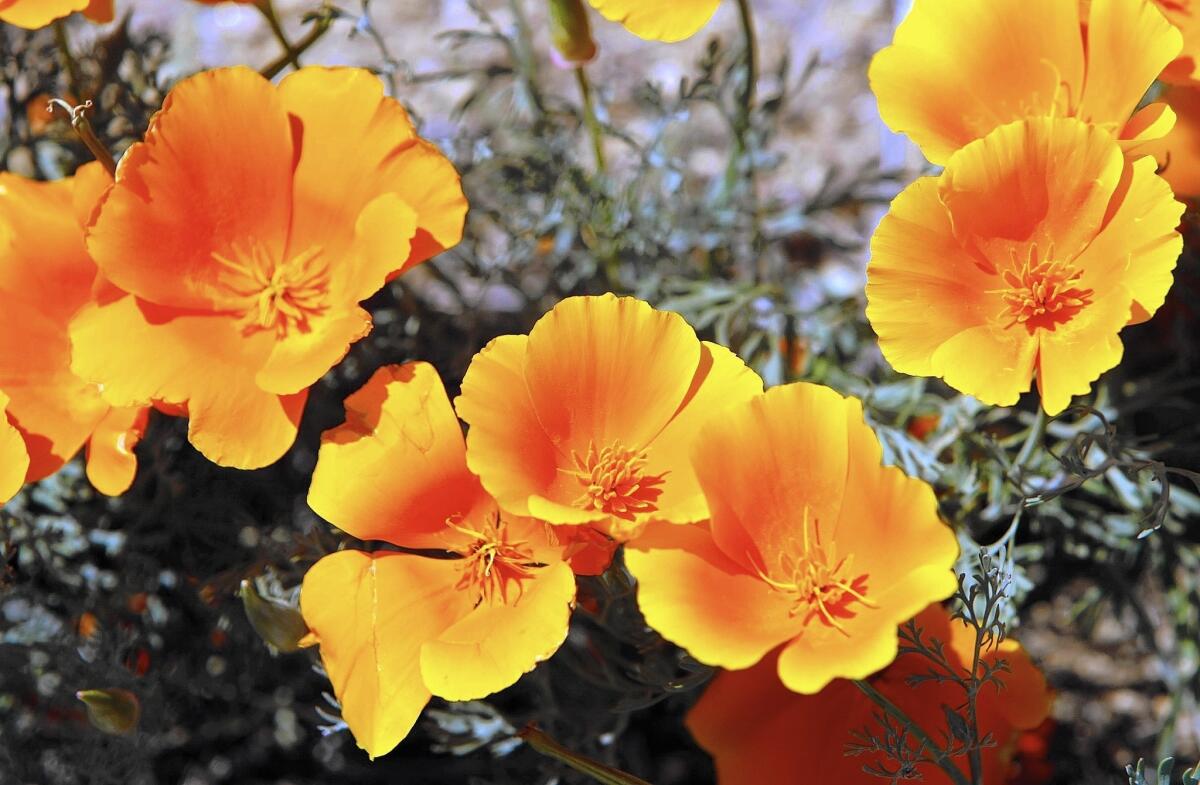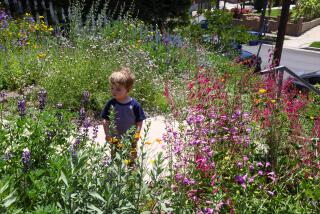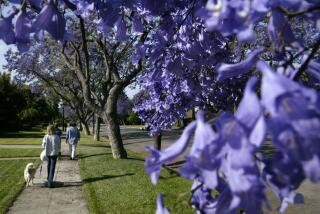Drought needn’t mean that spring skips your garden

- Share via
For Southern California gardeners, March is a month of wistful promise. A little rain falls, and the possibilities for brilliant spring and summer planting — exploding colors, bountiful edibles — seem limitless.
But you might want to stop daydreaming. The state’s four-year drought has not ebbed, and that likely will mean continued watering restrictions and, worst case, water rationing. The cost of water is steadily climbing as well.
What’s a gardener to do?
Plant smart, say landscaping professionals. This may be the year to give your usual spring-summer palette of thirsty annuals a rest. Walk right past the petunias, begonias and lobelia and make some interesting, less needy choices. Preparing your soil correctly is more important than ever. Plant now, in March, while there is still moisture in the soil. And, they all stress, learn how to water properly, which, in reality, is a lot less than you think you need to water.
Start with the right plants. “Anything you buy as color won’t work,” says botanist Frank McDonough of the Los Angeles County Arboretum and Botanic Garden. “Disneyland got us hooked on colorful annuals, but it’s really an unsustainable thing.” Perennials, conversely, either are sinking deep roots or are storing water in tubers and bulbs, preparing themselves for permanence. Search out varieties that require little water once established.
Look for plants that are tough customers. “The story in my garden is: How close can I get to no care in order for this to survive?” says Yvonne Savio, who runs the UC California Cooperative Extension master gardener program. “If it doesn’t, well, that’s that. We’re moving on.”
Who are these troupers? Natives, of course, although McDonough says those are better planted in the fall. He prefers plants from parts of the world that are already adapted to our climate — the blue-greens from South Africa, Australia, the Mediterranean. He has high praise for succulents, among them, large-petaled aeoniums and intricate sedums. Another group that does especially well in dry conditions is an array of woody herbs, starting with rosemary and sage, which do better without water. “People should start exploring textures, colors of foliage, smells,” he says. “The garden becomes much more satisfying as a sensual experience.”
So where does that leave the vegetable patch? Don’t write it off just yet.
“One of the things I’ve been telling my clients,” says Beth Edelstein of BE Landscape Design in Santa Monica, “if you are going to water a plant, you should be able to eat it.”
“I hate to see all the articles that say you can’t grow vegetables,” says Savio, who specializes in vegetable growing and trains gardeners who go on to volunteer in community, school and homeless shelter gardens. “It isn’t just the type of plant that is the big villain here; it’s the type of watering.” Deep and infrequent — weekly — is the key, although current time restrictions on watering make that difficult. Savio advises sinking a series of 1- and even 5-gallon nursery containers between rows of vegetables, filling them with a mix of compost and manure, and watering them to the brim weekly. They will deliver water and nutrients directly to the roots, encouraging the plants to hunt deeply for water.
::
What to plant this dry March
What should you be planting this month? Here are some suggestions:
Water-wise woody herbs: rosemary, sage, oregano, thyme, lavender, marjoram, catmint, tarragon, mint (the last is an aggressive spreader; plant in pots)
Edibles: squash (seed), cucumbers (seed), beans (seed), carrots (seed), radishes (seed), early-season peppers (seedlings), peppers (seedlings), eggplant (seedlings), potatoes, beets, turnips
Low-water favorites: Cape daisy, aloe, bird of paradise, carpet roses, fortnight lilies, variegated hebe, Mexican marigold, kangaroo paw, California poppy, pennisetum, flax lilies, blue fescue, phormium, echeveria, senecio, aeonium






